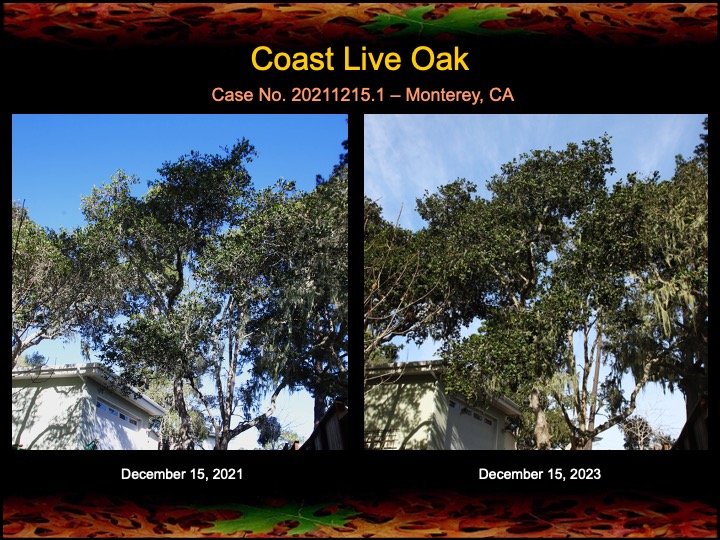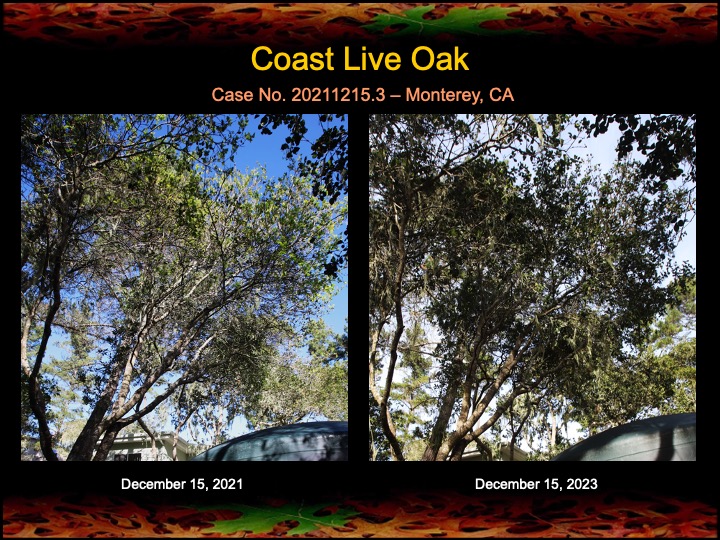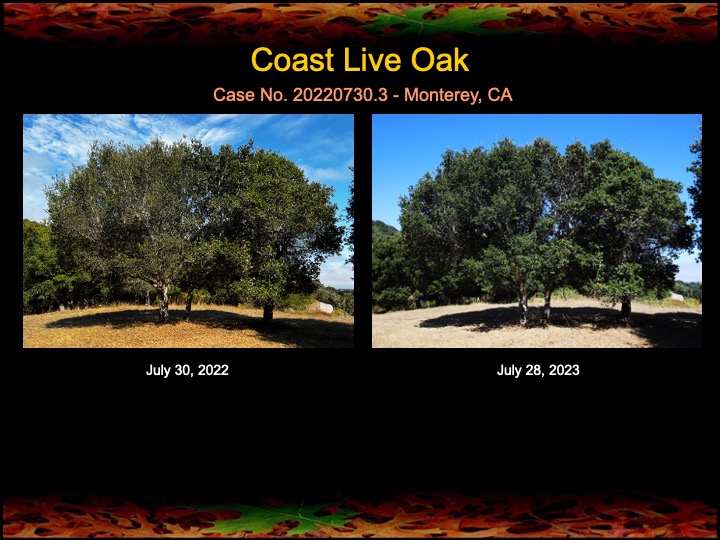
Two years ago I began fire mimicry treatments on several sick and declining coast live oaks and Monterey pines in Monterey, CA. Yesterday I checked on their progress and am generally pleased by the results, as is the homeowner!



Two years ago I began fire mimicry treatments on several sick and declining coast live oaks and Monterey pines in Monterey, CA. Yesterday I checked on their progress and am generally pleased by the results, as is the homeowner!



Last year I began fire mimicry treatments on several Ancestor oaks in Monterey, CA. Several of these oaks date from a time when the Ohlone Indians were the sole occupants of the land. As you can see the oaks are responding quite favorably to being tended. Note the change in greenness and lushness of the canopy leaves. It only took a few hours of work.


Here’s a clip of some fire mimicry work we did today around an ancient coast live oak in Carmel Valley, CA. The focus in this first stage of fire mimicry is to remove ladder fuels and reduce the competition from nearby woody shrubs. Afterwards, we will fertilize the soils with biochar (produced from burning the slash piles), along with compost tea and alkaline-rich minerals, then apply limewash to the trunks.
Here’s a time-lapse video of the fire mimicry work we did today in Carmel Valley. Enjoy!
Yesterday our crew of fire mimicry practitioners began treatment of an ancient oak grove in Carmel Valley, CA. The videos here show the results of clearing ladder fuels to help prevent a healthy ground fire from becoming a destructive canopy fire. The video below was cut short by an unfriendly encounter with a wasp nest, an ever-present menace along with all the poison oak.

The latest efforts here at Sudden Oak Life have involved the restoration of about 20 acres of oak woodland and native prairie habitat in the Central Coast. I have pulled together a strong team of workers who are well trained in the principles and practices of fire mimicry.
On one particular hillside young coast live oaks have been invading an adjacent prairie of native bunchgrasses dominated by California fescue. Coastal prairie is one of the most endangered ecosystems in California due to fire suppression and conversion to agricultural uses. In places, the oak trees have shaded out and all but replaced the native prairie species. Our work here focused on removing many of the woody shrubs and young oaks along the prairie margin, and thinning and pruning oaks in nearby woodlands that still support substantial bunchgrass cover. Efforts were made to preserved many of the native understory species including toyon, currant, sage, and mountain mahogany. All the removed oaks were less than 6″ in diameter, per county regulations.

Here are several time-lapse videos from today showing our efforts to prepare a grove of ancient coast live oaks for reintroduction of cultural fire via fire mimicry. Notice that our focus is on removing ladder fuels in ensure that any cultural fires remain on the ground (good fire), rather than spreading into the canopies (bad fire).
These time lapse videos are of the fire mimicry work done with my coworkers over the past two days. Note how we are careful to remove the ladder fuels, so that any fires are more likely to stay on the ground (good fire), rather than spread into the canopy (bad fire). Enjoy!
Today we applied fire mimicry treatments to several Ancestor oaks in Monterey, CA. These time-lapse videos show phase 1 were we clear the woody understory, thin the young trees, and prune the lower branches to improve the health of the oaks and remove the ladder fuels to prevent a ground fire from spreading into the canopy. Tomorrow we will implement phase 2 – Compost tea, soil minerals, and limewash. Just three of us working today, but we felt into the forces of fire and got a hella lot done! Please take the time to view these videos. To me they feel cathartic.

Today I inspected a grove of coast live oaks that have received fire mimicry treatments for the past two years. The results generally show improvement in canopy density and lushness, with the exception of one oak (photo below) that made a remarkable recovery last year, but ended up succumbing this year to stress and disease. Note the last photo set of this post showing the canopy of a nearby untreated oak for comparison.


Recent Comments